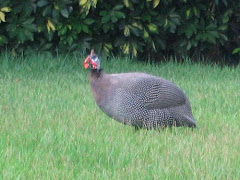Here is the cool website that I found about Egypt :
http://www.ancientegypt.co.uk/menu.html
Daily life in ancient Egypt revolved around the Nile and the fertile land along its banks. The Nile flooded every year, and each flooding enriched the soil and brought good harvests and wealth to the Egypt land. The Egyptian built mud brick homes in villages and in the country, grew some of their own food and traded in the villages for the food.
The ancient Egyptians thought of Egypt as being divided into two types of land, the "black land" and the "red land". The "black land" was the fertile land on the shores of the Nile. The Egyptians grew their crops there. This was the only land in ancient Egypt that could be farmed because a layer of rich, black silt was deposited there every year after the Nile flooded. The 'red land' was the barren desert that protected Egypt on two sides.
The ancient Egyptians believed in many different gods and goddesses. The ancient Egyptians believed that it was important to recognize and worship these gods and goddesses so that life continued smoothly.
The earliest ancient Egyptians buried the dead bodies in small pits in the desert. The heat and dryness of the sand dehydrated the bodies quickly, creating lifelike and natural "mummies". And later, the Egyptians started burying the dead bodies in the coffins to protect them not to be eaten by the scavengers. But the dead bodies in coffins decayed because the bodies in coffins were isolated with hot, dry sand of the dessert. Over many centuries, the Egyptians found their way of preparing the bodies. They embalming the dead bodies and wrapping them in strips of linen. And today, we call this process mummification.
The most powerful person in ancient Egypt was the pharaoh. The pharaoh was the political and religious leader of the Egyptian people. He owned all of the land, made laws, collected taxes, and defended Egypt against foreigners. Many pharaohs went to war when their land was threatened or when they wanted to control foreign lands. If the pharaoh won the battle, the conquered people had to recognize the Egyptian pharaoh as their ruler and offer him the finest and most valuable goods from their land.
Pyramids are the tombs of the pharaohs and their queens. The pharaohs were buried in of many different shapes and sizes from before the beginning of the Old Kingdom to the end of the Middle Kingdom. The Egyptian built about eighty pyramids that we have known until today. The three biggest and best-preserved pyramids were built in Giza at the beginning of the Old Kingdom. The most famous pyramid of them was the one built for the pharaoh Khufu. It is known as the "Great Pyramid".
The ancient Egyptians believed that temples were the homes of the gods and goddesses. Every temple was dedicated to a god or goddess and he or she was worshipped there by the temple priests and the pharaoh. The large temple buildings were made of stone, and they would sustain there for a long time. The walls were covered with scenes that were carved onto the stone then brightly painted. And they showed the pharaoh fighting in battles and performing rituals with the gods and goddesses.
The believed that it was important to record and communicate information about religion and goveancient Egyptians rnment. The most famous scripts of the ancient Egyptian are hieroglyphic. They used the crypts; scribes were able to preserve the beliefs, history and ideas of ancient Egypt in temple and tomb walls and on papyrus scrolls.
From the end of middle kingdom until today are more than 3700 years, we still not sure how could old Egyptian carried the heavy stones from the place far, far away without machines. And cut the stones perfectly, then built the huge pyramids perfectly by manpower. There are still a lot of mysteriousness that we don't know, and we'll continue looking for the answers.
Wednesday, January 30, 2008
Subscribe to:
Post Comments (Atom)

No comments:
Post a Comment